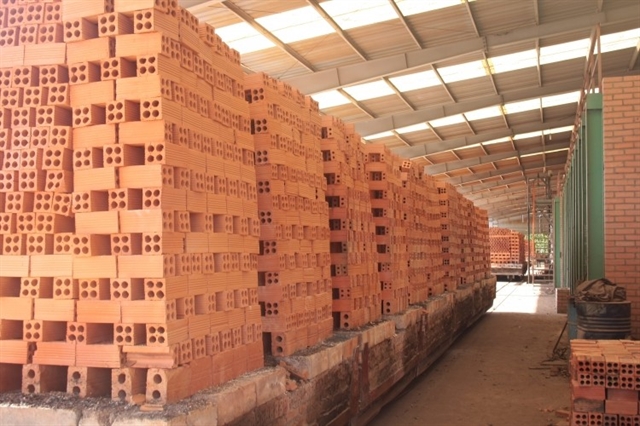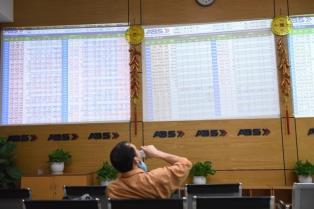In the cost structure of the construction industry, where input materials always account for the largest proportion, any fluctuations in input prices can quickly erode profit margins.

HÀ NỘI — The sharp increase in construction material prices is creating clear polarisation within Việt Nam’s construction sector.
Enterprises’ profitability no longer relies mainly on revenue growth but increasingly depends on their ability to control costs - a major challenge for the sector’s management and financial capacity.
In cost structure for the construction industry, input materials always account for the largest proportion. Any fluctuations in input prices can quickly erode profit margins.
According to the thematic report Construction Sector Update June 30, 2025 – Breakthrough in the Era of Public Investment and Urbanisation published by Agribank Securities Joint Stock Company (Agriseco), the wave of rising material prices is exerting unprecedented pressure on firms with weak financial capacity and cash flow management.
Statistics show that construction sand prices surpassed VNĐ450,000 (US$17.22) per cubic metre in 2024, up approximately VNĐ20,000 year-on-year. Bitumen is approaching VNĐ18,000 per kilogram, while steel, which accounts for up to 70 per cent of total material costs, remains around VNĐ12,000–13,500 per kilogram. Although not yet returning to 2022 peaks, Agriseco warned of persistent price risks as China begins tightening output.
The report notes that sand, stone and bitumen prices are trending upwards, while steel and cement continue to face oversupply pressure from the Chinese market. This imbalance makes it extremely difficult for businesses to fully control cost structures, leading to a gradual but persistent erosion of profit margins.
Businesses polarised
Contractors focused on infrastructure, such as CIENCO4 Group JSC (C4G), Deo Ca Traffic Infrastructure Investment JSC (HHV), FECON JSC (FCN) and Licogi 16 JSC (LCG), are suffering the most from fluctuating input costs. Due to the long-term nature of contracts, project values are usually fixed at the outset, while material prices rise continuously, severely squeezing margins.
Agriseco sasi: “Enterprises with a high proportion of infrastructure projects will be more significantly affected.”
In Q1/2025, many major names posted steep profit declines: Vinaconex (VCG) fell 68.8 per cent, and Coteccons (CTD) dropped 45.5 per cent year-on-year as gross margins contracted due to input costs rising faster than revenue.
Although most businesses maintained order backlogs up 20–30 per cent from the previous year, potential profit did not rise proportionately amid escalating material costs.
In contrast, residential construction contractors demonstrated stronger resilience. Thanks to shorter project cycles, flexible timelines and the ability to negotiate price adjustments with investors, these firms could better adapt.
Agriseco assessed that rising material prices might even benefit residential builders because of faster capital turnover, allowing them to pass on part of the cost increases to clients.
In fact, in Q1/2025, companies such as Dat Phuong Group (DPG), LIZEN (LCG), and Deo Ca reported positive profit growth, reflecting their effective cost control and adaptability to input volatility.
'Businesses with healthy financial structures, a high proportion of equity capital, swift cash flow cycles and large backlogs are less exposed to the risks of material price fluctuations,' the report emphasised.

Prospects and challenges
In 2024, the sector recorded a modest increase in gross margins from 12 per cent to 14 per cent. However, the medium-term outlook remains clouded by multiple risks. Agriseco warned that slow disbursement of public investment and rising material costs were gradually constraining profitability.
Furthermore, after the tightened corporate bond market in 2022–2023, access to capital for construction enterprises has become more challenging. Quick ratios have deteriorated, and provisions for doubtful debts have exceeded 10 per cent of receivables - signalling lingering liquidity stress beneath revenue growth figures.
Against this backdrop, firms lacking cost management capacity, over-reliant on debt and without strategies to hedge material price risks could easily 'fall off' the profit race. Conversely, those proactively selecting projects, maintaining robust finances, healthy cash flows and timely profit-taking strategies will seize opportunities arising from low interest rates, recovering property demand and improved FDI inflows in the second half of the year.
In reality, despite many challenges, numerous companies still see strong growth opportunities in 2025, spurred by public investment momentum and rising construction demand.
Lê Viết Hải, Chairman of Hoa Binh Construction Group, said: “All four segments, urban housing, resort real estate, infrastructure and industrial construction, have good potential for growth in 2025.”
International consultancy organisations have even forecast that construction sector growth this year could double that of 2024. Sharing this optimism, Phạm Việt Khoa, Chairman of FECON, emphasised that the firm would leverage public investment momentum to expand into transport infrastructure, urban development and energy, targeting revenue of VNĐ5 trillion and post-tax profit of VNĐ200 billion.
Vinaconex also plans growth, targeting consolidated revenue of VNĐ15.5 trillion and post-tax profit of VNĐ1.2 trillion while preparing resources to enter new sectors such as urban rail, wind power and nuclear energy. — VNS





